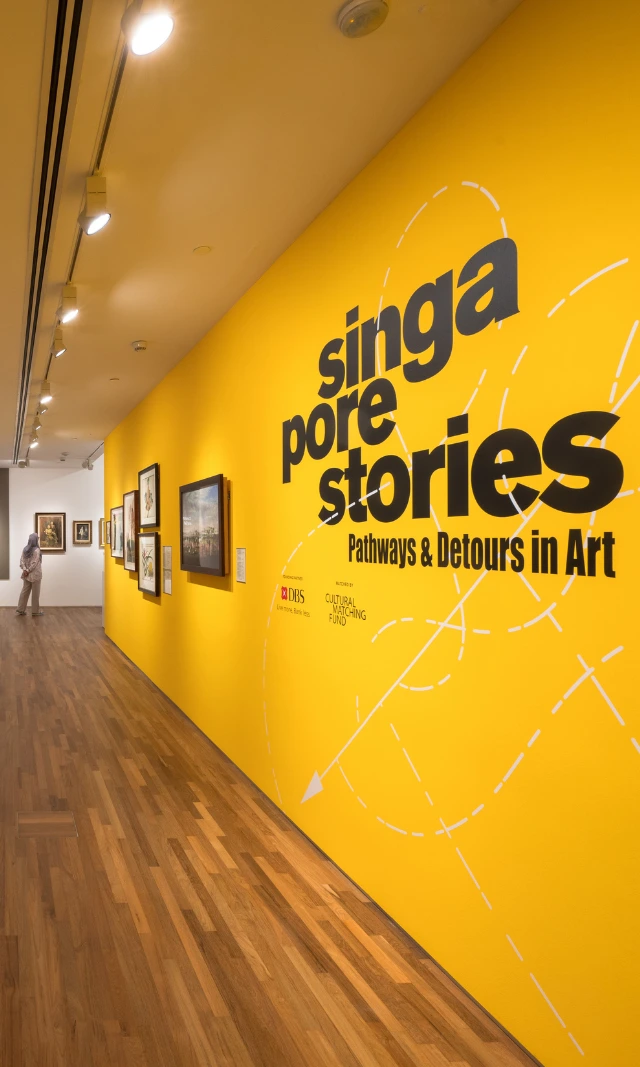National Gallery Singapore presents Tropical, world’s first major comparative exhibition on Southeast Asian and Latin American Art
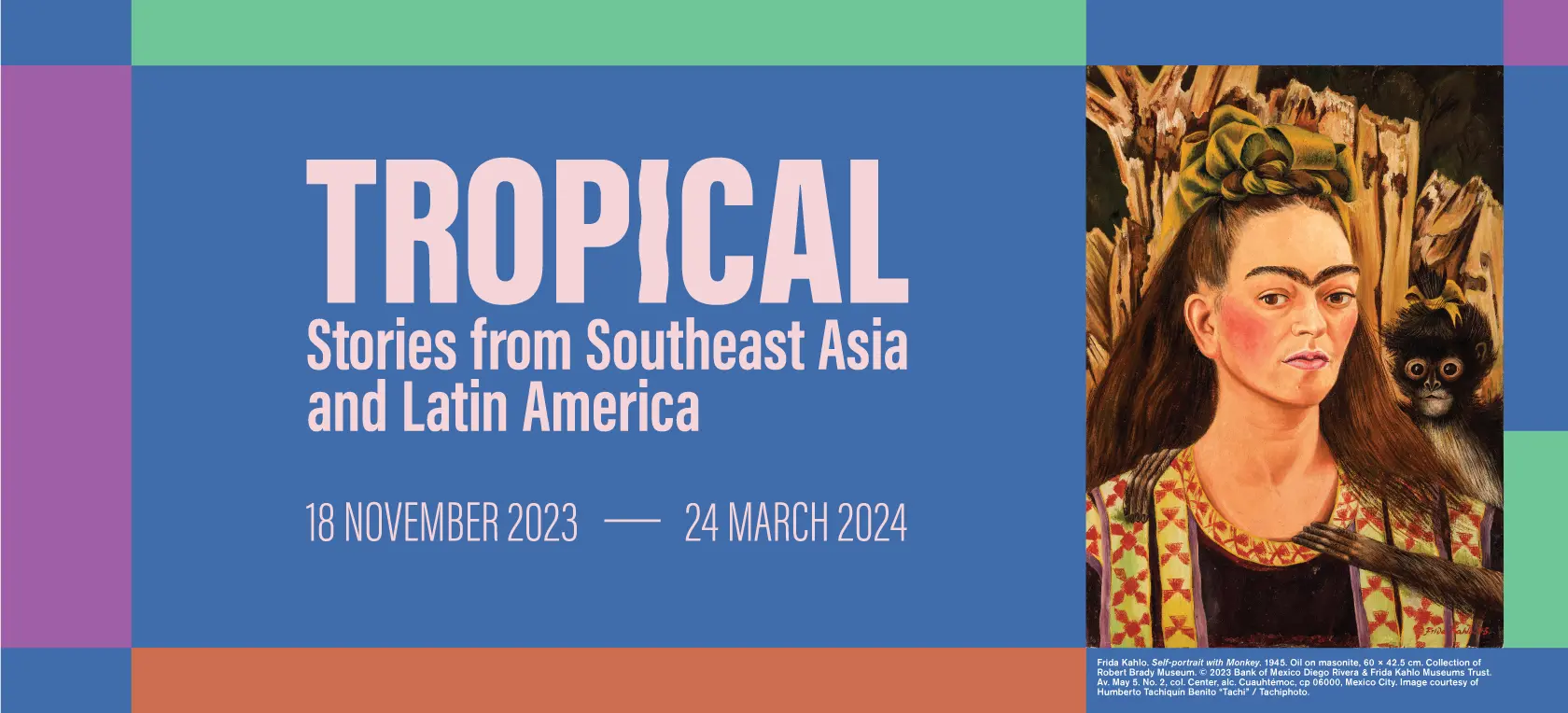
Singapore, 15 November 2023 — National Gallery Singapore presents Tropical: Stories from Southeast Asia and Latin America, the world’s first major comparative exhibition of artistic expressions from both regions, featuring over 200 paintings, sculptures, drawings, performances and immersive installations by more than 70 artists. Running from 18 November 2023 to 24 March 2024, this exhibition spans the 20th century, and explores the vivid stories of artists, dreamers and writers who dared to threaten conventions, and fostered solidarities in the aftermath of colonialism.
Tropical offers new perspectives on the development of modern art. At the heart of this exhibition lies the unwavering quest of artists and thinkers who sought to claim their rightful position within the story of art and beyond. As a way to showcase this spirit of empowerment and change, the exhibition moves away from conventional methods of displaying paintings on walls. Drawing on the groundbreaking designs of legendary architect Lina Bo Bardi, visitors will uncover new possibilities in their encounter with artworks.
Dr. Eugene Tan, Director of National Gallery Singapore, says, “Tropical: Stories from Southeast Asia and Latin America is a pivotal exhibition that has been years in the making, and we are thrilled to be able to present it on such a scale. By focusing on affinities between 20th century Southeast Asian and Latin American artists, the Gallery spotlights the innovative ways through which they sought to stake a claim for art and representation on their own terms. Tropical embodies the Gallery’s efforts to drive greater understanding of Southeast Asian art, its histories and connections to global art histories. We hope that this exhibition will contribute to ongoing discourses on the reframing of modern art, made possible with the support of artists, colleagues and valued partners around the world.”
Mr Yuen Kuan Moon, Singtel’s Group Chief Executive Officer says, “For over 140 years, we have been connecting communities across the world, empowering generations of people to bridge geographical distance to share their experiences and build stronger relationships. Despite being quite literally on the opposite side of our planet, Latin America, with its rich cultural tapestry, shares many remarkable similarities with the people in Singapore, including incredibly diverse societies and a history shaped by colonialism. Through Tropical: Stories from Southeast Asia and Latin America’s iconic works of art at the Singtel Special Exhibition Gallery, we hope to help visitors explore the commonalities that bind us and spark meaningful new connections that transcend continents.”
Tropical: Stories from Southeast Asia and Latin America is proudly supported by Strategic Partner, Singapore Tourism Board and Lead Partner, Singtel.
The exhibition is also supported by BBVA, Bracell, Screaming Comet Foundation and Tanoto Foundation.
Journey through stories of self-determination
Writing is as central to Tropical as are paintings, sculptures, film, prints and installations. The exhibition’s sectional titles across the Singtel Special Exhibition Galleries are borrowed from three legendary texts: The Myth of the Lazy Native by Syed Hussein Alatas, This Earth of Mankind (Bumi Manusia) by Pramoedya Ananta Toer, and The Subversive (El Filibusterismo) by José Rizal. These texts exemplify the elaborate links among writers, poets, architects and artists at the height of decolonisation, brought about by the historical, societal and economic contentions around art-making in these formerly colonised societies.
Demystifying the image of the tropics
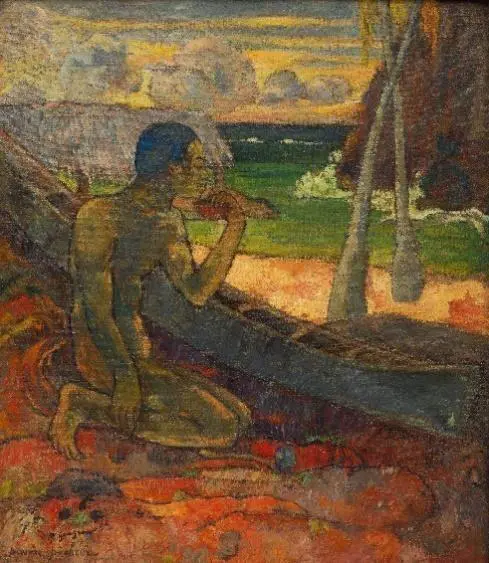
The exhibition begins with The Myth of the Lazy Native in Gallery 1. As the title suggests, the stereotype of the “lazy native” was an invention of colonial rule. Visitors can view Pobre pescador (Poor Fisherman) by French painter Paul Gauguin, a piece painted during his time in Tahiti. The painting illustrates his pursuit of an untouched paradise, marked by his romanticised notions of simple living among the "natives" and the island's lush landscapes. While his exoticist paintings gained widespread exposure after his passing, they also sparked dialogues on the impact of Eurocentric perspectives in modern art, as well our contemporary perceptions of these regions.

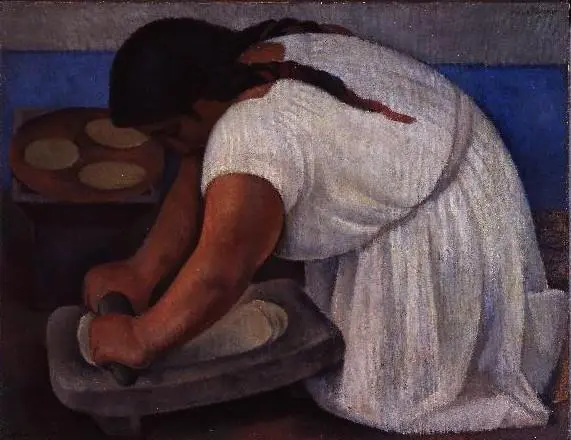
The section soon then pivots to artists from Southeast Asia and Latin America who actively strived to challenge exotic depictions by seeking to paint a more “truthful” representation. The works range from powerful paintings of farmers, labourers, and even mothers and wives – stories and subjects that resisted the narrative of the “lazy native”. Diego Rivera’s La molendera (Woman Grinding Maize), depicts the realities of everyday life and labour, and Mother Nature’s Bounty Harvest, a painting by Victorio C. Edades, Carlos “Botong” Francisco and Galo B. Ocampo, actively rejects the pastoral motifs (of serene scenes and peaceful farmers) that were prevalent in painting at that time, and aligned their art with the everyday struggles of the Filipino people.
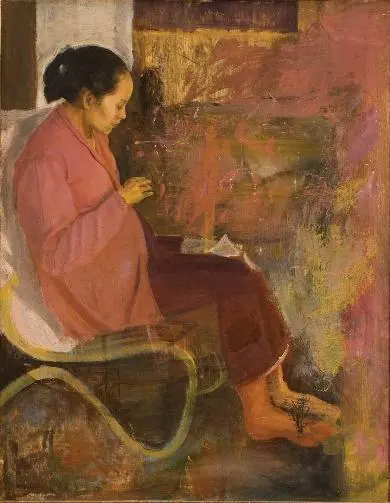
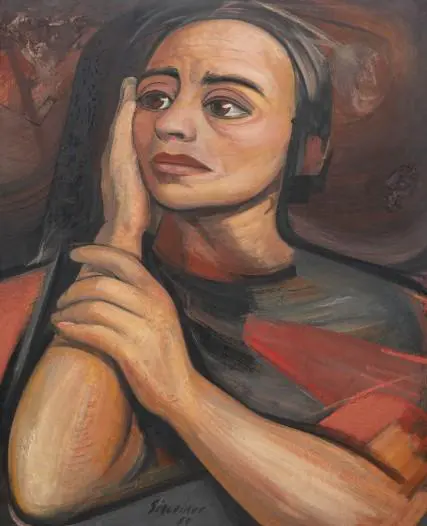
S. Sudjojono’s Istriku (Ibu Menjahit) (My Wife [A Mother Sewing]), is an intimate insight into daily life and its challenges, capturing a reflective moment where his then-wife is immersed in her sewing while pregnant with their first child. Her peaceful countenance contrasts against the expressive strokes of colour in the background, perhaps suggesting the tumultuous context of Indonesia’s independence during which time the painting was completed. Presságio (Angélica Arenal de Siqueiros) (Omen [Angélica Arenal de Siqueiros]) is a portrait of the artist’s wife, painted in preparation for a significant mural in Mexico City. In the mural Tormento de Cuauhtémoc, she transforms into a character that represents the entirety of the Mexican people and their lament about the plight of the last Aztec Emperor who is remembered as a symbol of resistance against the colonial powers.
The artists thus shattered the narrow and objectifying lens through which colonised societies had been viewed, creating a fresh narrative that honoured the dignity and multifaceted identities of their subjects. Whether these artists resided in Southeast Asia or Latin America, their art became a means of reclaiming their cultural heritage, and “tropical” becomes an empowering attitude.
Reconstructing the self and hope in the wake of a new modernity
Tropical delves into the inner worlds of the artists in Gallery 2’s This Earth of Mankind. Many regions formerly under colonial rule were either gaining full independence or on the brink of transformative change in the 1940s. This manifests in an arresting series of self-portraits, through which artists sought to reclaim their identity and distinguish themselves as custodians of a new modern art narrative. Many of these works also clue visitors in on how the artists grappled with their own positions in relation to larger, burgeoning geopolitical issues of the time, as they stood on the cusp of change between a violent colonial past and the promise of a better, democratic and prosperous future.
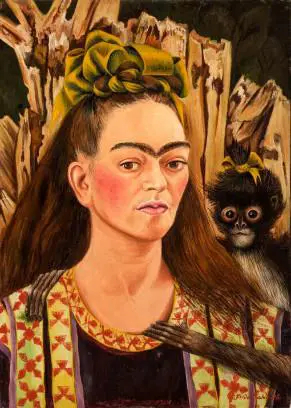
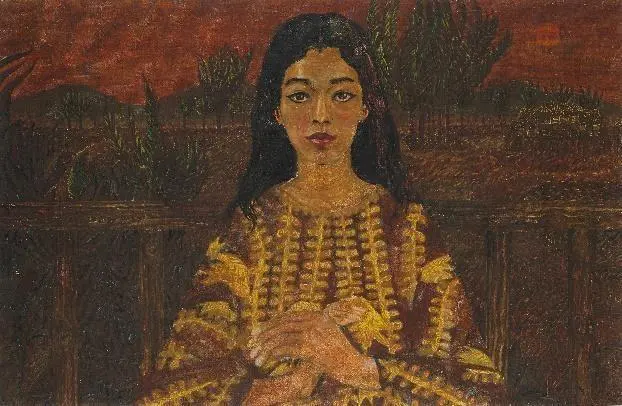
Visitors will be entranced by a captivating self-portrait of renowned artist Frida Kahlo, displayed in Singapore for the first time. Her works have become emblematic of female determination and power. In Self-Portrait with Monkey, the dark ochre tones depicting the withered tree stump in the background, combined with her choice of garment, a black velvet Tehuana Huipil, symbolises her identification with the matriarchal societal structure of Zapotec women in the south of Mexico. Coincidentally, the ochre colour palette extends into Patrick Ng’s Self-Portrait, as he reimagines himself as a long-haired, Malay female clad in batik. The inclusion of batik here signifies a melding of old traditions with new adaptations, a profound representation of Malayanisation, a sociopolitical programme that sought to establish a “homogenous” identity in the soon-to-be independent nation. The exhibition experience turns self-reflexive, as visitors place themselves in a sea of self-portraits of artists such as Affandi, Bagyi Aung Soe, Quamrul Hassan and more, in between landscape paintings that are symbolic of change and new forms of image making. This allows visitors to gain insight into how artists used their own bodies to rethink established systems in modern art, and ponder on the wider sociopolitical context, challenging gender, racial and class hierarchies.
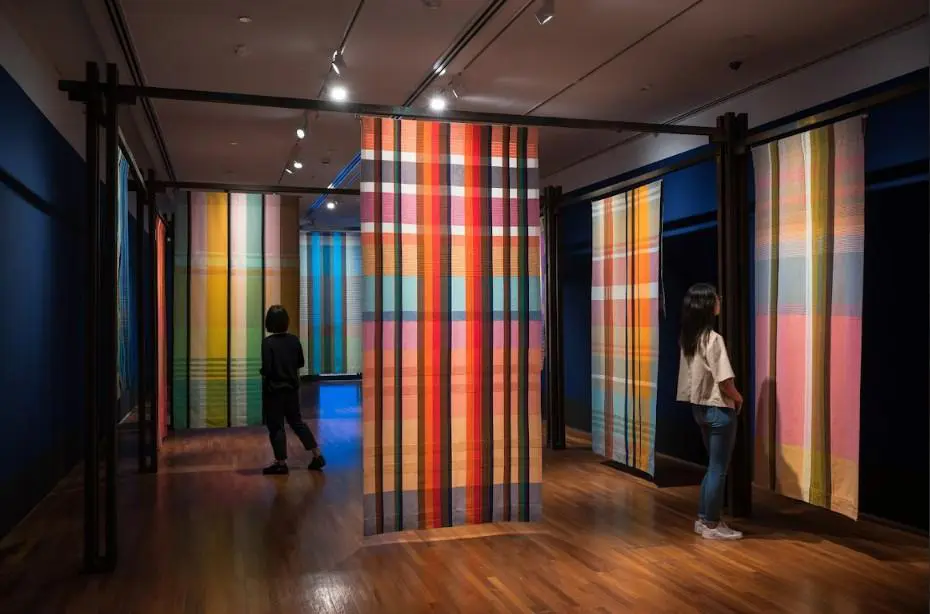
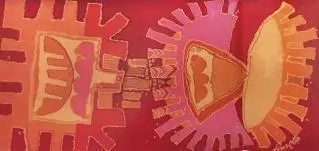
Installation view of Barbara Sansoni’s textile works at Tropical: Stories from Southeast Asia and Latin America, National Gallery Singapore, 2023. Image credit: National Gallery Singapore
In the same gallery, visitors will also be introduced to the myriad of ways artists incorporated materiality into their work to synthesise a completely different language of making. This includes Grace Selvanayagam’s batik paintings and Barbara Sansoni’s woven textile works that draw visitors closer, as they walk through and around. By displaying these objects typically confined in the realm of craft or feminine-driven industries, the exhibition purposefully demonstrates the breadth of strategies and techniques of expression that contest the exotic iconographies of the tropics in modern art, as well as challenge the notion that these images were only produced by the West before the 20th century.
Strategies for change and taking control
The exhibition concludes with The Subversive in Gallery 3, tracing the perspectives of artists who used modern painting and sculpture as powerful tools for instigating change. Each artists’ work unveils a new world of connections across time, distance, and artistic practice, as they contemplate the limitless potential for materials and ideas to evolve, mutate and transform into novel forms, such that even the most limiting of circumstances give birth to the most innovative concepts.
These artists travelled widely and connected with like-minded individuals, and actively devised new ways of resistance and self-determination, breaking free from the idea that all artistic endeavours must defer to Western influences. Such unique strategies are the focus for this final segment of Tropical, foregrounding the artists who saw the tropics as a productive and dynamic space for creation, where the seen is bridged in the most marvellous ways with the unseen.
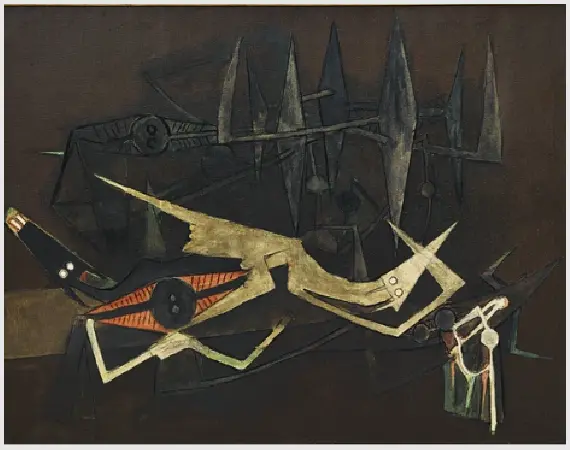
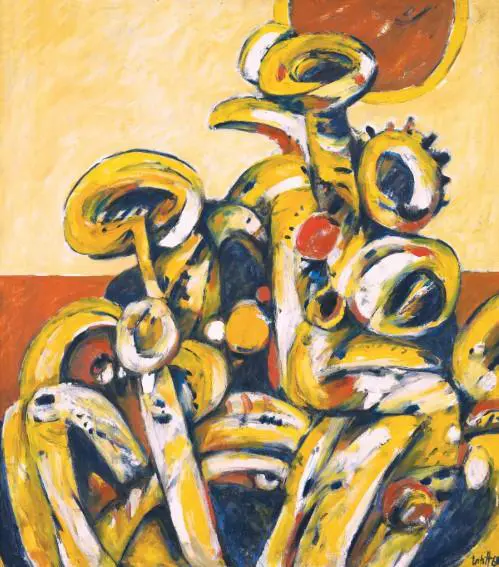
Visitors will be treated to 15 bold artworks that showcase the defiant and creative attitude of the time. This includes Cuban artist Wifredo Lam’s Sans titre (Untitled), which showcases his unique style that fuses his Afro-Cuban and Cantonese heritage. He championed the empowerment of his people by incorporating symbols that combine different beliefs and schools of thought. Sans titre shows geometric figures reminiscent of totemic statues from the Afro-Cuban tradition, with a distinct pale figure dancing in the foreground. Malaysian artist Latiff Mohidin’s Tumbuhan Tropika (Tropical Growth) depicts a vegetal mass becoming entangled with itself as it reaches for the sun. The growth, it seems, is an attitude, an urge to attach, add tension and bring physical cohesion to disparate forces which intercede, overlap, and tackle one another.
Piercing through rigid notions of painting, sculpture and video on walls and in white cubes, this final section forces visitors to be even more aware of their surroundings, as they navigate an ephemeral space of hopes and dreams.
Inspiring new ways of displaying and experiencing art
Visitors are also invited to explore the interactive and reading zones within each gallery.
Located within Singtel Gallery 1, the Library of the Tropics is a special zone within the exhibition that showcases an intriguing collection of books, films, paintings, posters and cultural objects revolving around the islands of Bali and Tahiti. These islands hold a pivotal role in the narrative of 20th-century art, especially when it comes to depictions of "tropical paradise". Visitors are invited to reflect upon the compelling and troubling intersections that persist between modern art, mass tourism and their combined appetite for the exotic, while taking in the scale of these often superficial and imagined representations via hundreds of books.
Tropical will also introduce visitors to artists who sought to push the boundaries of art-making by conceptualising artworks as moments for audience participation and engagement. Visitors can engage with Brazilian artist Lygia Clark's Diálogo. Óculos (Dialogue. Goggles) and Máscaras sensoriais (Sensorial Masks), which transcend traditional art boundaries by offering a multi-sensory experience that bridges the act of seeing. They are also encouraged to put on Hélio Oiticica’s Parangolés and activate the artwork through their movements.
Complementing the impressive collection of artworks, the exhibition features innovative display techniques developed by the famed architect Lina Bo Bardi in the 1960s and 70s, which have been specially adapted by Singapore-based architecture firm WOHA. These designs incorporate recycled materials, offering novel perspectives on viewing paintings while emphasising sustainable design.
Visitors will see artworks taken off the walls and placed onto “crystal easels” in Gallery 1, while Gallery 2 presents an impressive grid structure with a wood-panelled display system that arranges artworks throughout the space in an open-ended layout.
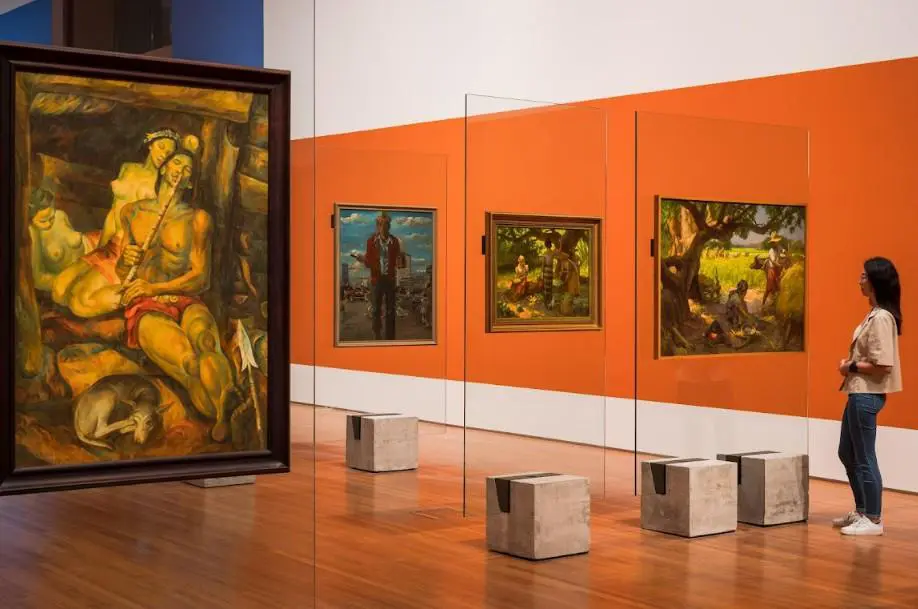
In Gallery 3, wooden lattice-like structures are used to introduce a free-standing approach to exhibition design. Stilts are employed to mount paintings, breaking down the conventional gallery space to create a more porous environment. Adopting Bo Bardi’s philosophy of adaptive reuse and upcycling, WOHA has constructed wooden structures using planks salvaged from Jurong Shipyard in the 1980s, localising the design approach with a touch of Singaporean industrial history.
Step into the immersive world of “tropical”
The experience extends to the City Hall Chamber, where Hélio Oiticica’s most influential installation, Tropicália, is realised in Southeast Asia for the first time.
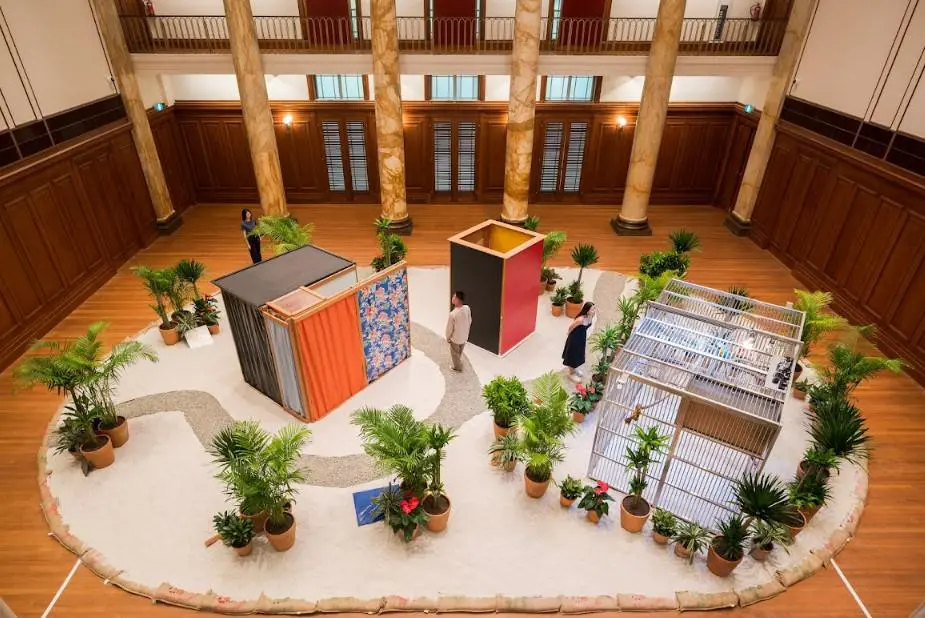
As a critique of popular constructions of Brazil as a "tropical paradise", the artwork interrogates complex realities of everyday life in the Global South. Visitors are invited to step into the artwork that features concrete slabs, plants, macaws, sand, gravel, and wooden structures, entering a multi-sensorial realm as they contemplate the stark juxtaposition between idyllic stereotypes and the harsh realities of Brazilian life.
Encountering “tropical” in the public spaces of the Gallery
For the duration of Tropical, other spaces of the museum will be activated by prominent artworks by Southeast Asian and Latin American artists that provide insight into the ideas presented in the main exhibition Galleries.
The Singapore Courtyard will be transformed by a new commission by the collective Dolores Zinny and Juan Maidagan. Titled Vientos Alisios (Trade Winds), the large-scale installation emerged from extensive discussions with the exhibition’s curators around materials gathered for the Library of the Tropics, a zone for reading, discussion, listening, and performance. In the same space, visitors will encounter more of Lygia Clark’s sensorial artworks, including Bichos, as well as David Medalla’s Cloud Canyons No. 24. Visitors will also be greeted by Eugenio Espinoza’s Circunstancial (12 cocos) (Circumstantial [12 coconuts]) at the Coleman entrance.
Exhibition programmes include performance-activations of several works, curator tours, talks, family programmes and more. For the full list of programmes, please view the annex.
Tropical: Stories from Southeast Asia and Latin America run from 18 November 2023 to 24 March 2024 at Singtel Special Exhibition Gallery, with installations that are free for public viewing at Singapore Courtyard and at the Coleman entrance. Standard Special Exhibition passes are available at $25 ($15 for Singapore Residents and Permanent Residents) Gallery Insiders enjoy free unlimited access to the exhibition. Tickets for Tropical: Stories from Southeast Asia and Latin America are now available at an early bird discount of 10% off till 31 December 2023 when tickets are purchased online. More information on the promotions can be found in the Annex.
More information can be found in the following annex or you may visit nationalgallery.sg/Tropical. Media assets are available via this link.
Annex A: Other Tropical Artwork Highlights
Annex B: Tropical Exhibition Design Highlights
Annex C: Exhibition programmes








